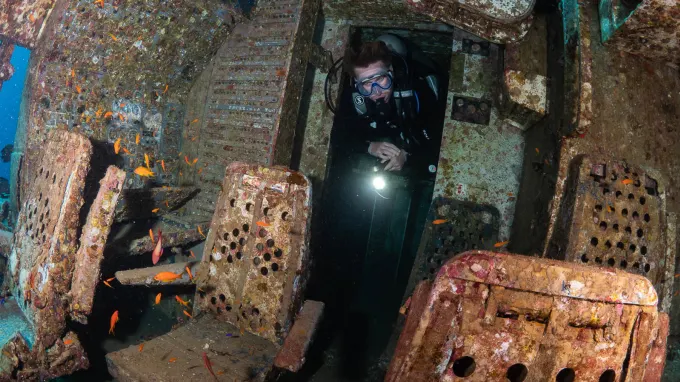The mystery of Malaysia Airlines Flight MH370 has been one of the most baffling and heartbreaking aviation tragedies in modern history. The flight, which disappeared on March 8, 2014, during a routine journey from Kuala Lumpur to Beijing, carried 239 passengers and crew members. For nearly a decade, the world has been gripped by theories, searches, and endless speculation about what happened to the ill-fated flight. The recent claim that the plane has been found under the ocean, devoid of human remains, adds a new layer to this enigma and raises numerous questions about the circumstances surrounding the disappearance and the ultimate fate of those on board.
The Disappearance of MH370
Flight MH370’s disappearance was an unprecedented event in the era of modern aviation. Shortly after takeoff, the plane lost contact with air traffic control and vanished from radar screens. Initial search efforts focused on the South China Sea, based on the flight’s last known location. However, as investigations progressed, it became clear that the plane had deviated from its planned route and likely ended up somewhere in the southern Indian Ocean, far off course.
The search for MH370 became one of the largest and most complex in aviation history, involving multiple countries, extensive use of technology, and significant financial resources. Despite these efforts, only a few pieces of debris—believed to be from MH370—were found on beaches along the western Indian Ocean, thousands of miles from the plane’s last known position. The discovery of these parts, including a wing flaperon on Reunion Island in 2015, provided some clues but no definitive answers.
Recent Claims of Discovery
The recent claim that MH370 has been found under the ocean, but without any human remains, reignites the mystery and speculation surrounding the flight. If true, this discovery would be monumental, not just for the families of the victims but also for the aviation community and the general public, who have followed the story with a mixture of hope and despair.
However, this claim raises several critical questions. Firstly, the absence of human skeletons is both puzzling and disturbing. Typically, in deep-sea wrecks, human remains can be preserved for a long time, depending on various factors such as water temperature, depth, and marine activity. The lack of skeletons could suggest several possibilities, each more troubling than the last. It might indicate that the bodies were somehow removed from the plane before it submerged, or that they decomposed in a manner that left no trace, perhaps due to unusual environmental conditions.
Scientific and Technical Considerations
Understanding why no human remains were found would require a detailed forensic investigation. The deep ocean is a hostile environment, with immense pressure, cold temperatures, and a lack of sunlight. These factors can slow down decomposition, but they can also lead to the rapid breakdown of organic materials under certain circumstances. Moreover, scavengers and other marine life could have played a role in the decomposition process.
If the wreckage was located in an area with strong currents, it’s possible that bodies were carried away from the crash site, further complicating the search. Additionally, if the fuselage was breached upon impact with the water, the remains could have been dispersed over a wide area, making them difficult to locate. The condition of the wreckage would also provide vital clues—whether it is intact or broken up could indicate the nature of the crash and the final moments of the flight.
The Impact on Families and the Public
For the families of the 239 people on board, this claim, if substantiated, could bring a mixture of emotions. On one hand, it might offer some closure, knowing that the plane has finally been found after years of uncertainty. On the other hand, the absence of remains could reopen old wounds and add to the pain of not having their loved ones’ final resting places properly identified.
The public, too, would likely react with a combination of relief and renewed curiosity. The mystery of MH370 has captivated people around the world, not just because of the scale of the tragedy but because of the questions it raises about aviation safety, technology, and the limits of human knowledge.
Moving Forward: Verification and Investigation
Before any conclusions can be drawn, the claim of MH370’s discovery must be thoroughly verified by authorities. This involves detailed underwater surveys, possibly using remotely operated vehicles (ROVs) or manned submersibles to capture images and retrieve parts of the wreckage. If human remains are indeed missing, forensic experts would need to analyze the site for any traces that might explain their absence.
Furthermore, investigators would seek to determine how the plane ended up where it did, whether the wreckage location matches the estimated flight path, and what this tells us about the plane’s final hours. The flight recorders, if recovered, could finally provide answers to the crucial question of what happened in the cockpit after the plane lost contact.
The reported discovery of Malaysia Airlines Flight MH370 under the ocean without human skeletons is both intriguing and heartbreaking. It adds a new chapter to the ongoing mystery, one that demands careful investigation and sober reflection. While the world awaits confirmation and further details, the story of MH370 serves as a somber reminder of the fragility of life, the complexities of modern aviation, and the enduring hope for answers, no matter how long it takes.










